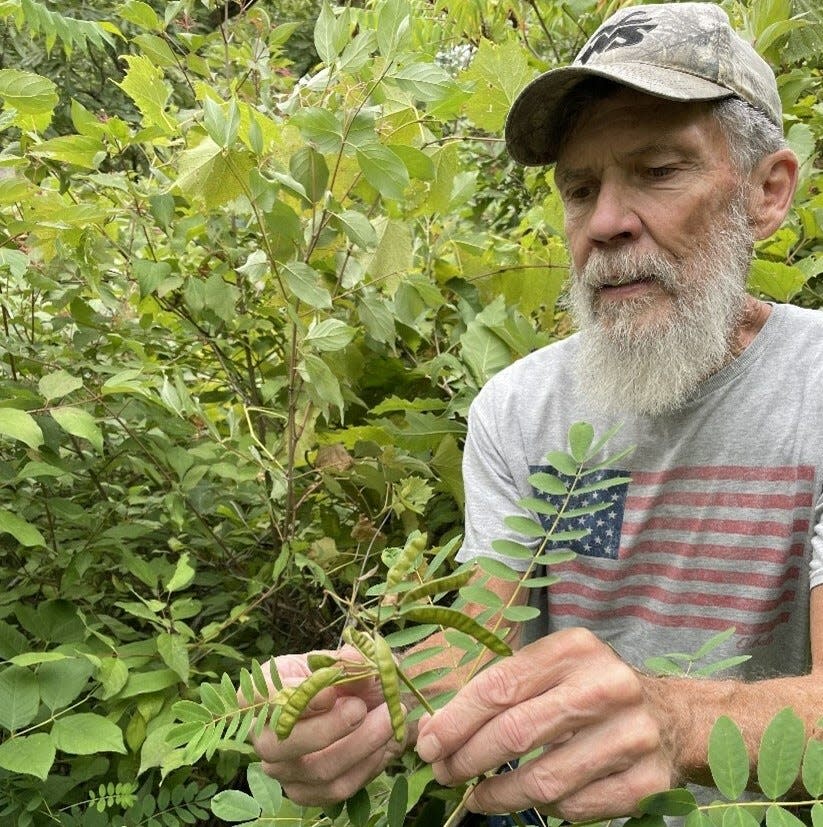Volunteers are the backbone of the Wisconsin DNR's rare plant monitoring program
It was a quest that spanned five years and could aptly be described as an outdoor search for a "needle in a haystack."
But last summer George Riggin, a trained volunteer for the Department of Natural Resources's Rare Plant Monitoring Program, and Bridget Rathman, a DNR habitat biologist, hit their mark.
On an excursion in southwestern Wisconsin they found Maryland senna, a plant not seen in the state since 1911.
More: Outdoors calendar
"I guess I have a stubborn streak," Riggin said in the DNR's 2023 rare plant annual report. "I went out so many times fully expecting it to jump up and greet me."
The DNR rated the find by Riggin and Rathman as "rare plant of the year."

It is one of the recent success stories in the DNR's rare plant monitoring program, along with eastern prairie fringed orchid in Winnebago County, yellow water lily along the Galena River in southwestern Wisconsin and prairie bush clover, a federally threatened legume in an unspecified region of the state.
This discovery of Maryland senna is among the features in the DNR's Rare Plant Monitoring Program's 2023 Annual Report.
Approximately 15% of Wisconsin's 2,366 native plant species are considered rare, meaning they are listed as endangered, threatened or of special concern, according to the DNR.
The DNR runs the monitoring program to help keep tabs on rare plants in the state. It relies almost exclusively on volunteers.
In 2023 52 trained volunteers from around the state submitted 178 reports of rare plants, including 31 populations in areas of Wisconsin where they had not been documented before, said Jessica Ross, DNR botanist who along with the DNR's Kevin Doyle coordinates the rare plant monitoring program.
Ross and Doyle are part of the DNR's Bureau of Natural Heritage Conservation.
"I am continuously impressed by the botanical knowledge, enthusiasm and commitment to conservation that we see from our volunteers," Ross said. "Their efforts play a significant role in helping us understand the state of rare plants in Wisconsin and inform how we might conserve them."
Since 2013 the rare plant monitoring program has trained 541 volunteers, Ross said.
To participate, volunteers must complete online training, pass a test and sign a confidentiality form. It's important to not disclose the locations of endangered or other rare plants, Ross said.
Volunteers then complete surveys in areas and help assess the health and size of rare native plant populations across the state. And in cases such as the 2023 find by Riggin and Rathman, they also help write Wisconsin botanical history.
Ross said the volunteer program is Wisconsin's largest source of rare plant data and is unique in the Midwest for its breadth of surveys.
The program is seeking additional volunteers.
"(Volunteers) don't have to be experts about plants or botany," Ross said. "They can learn along the way. And plants are everywhere. I think it's for everybody."
To learn more, visit the DNR's Rare Plant Monitoring Program webpage.
This article originally appeared on Milwaukee Journal Sentinel: Wisconsin DNR's rare plant monitoring program relies on volunteers

